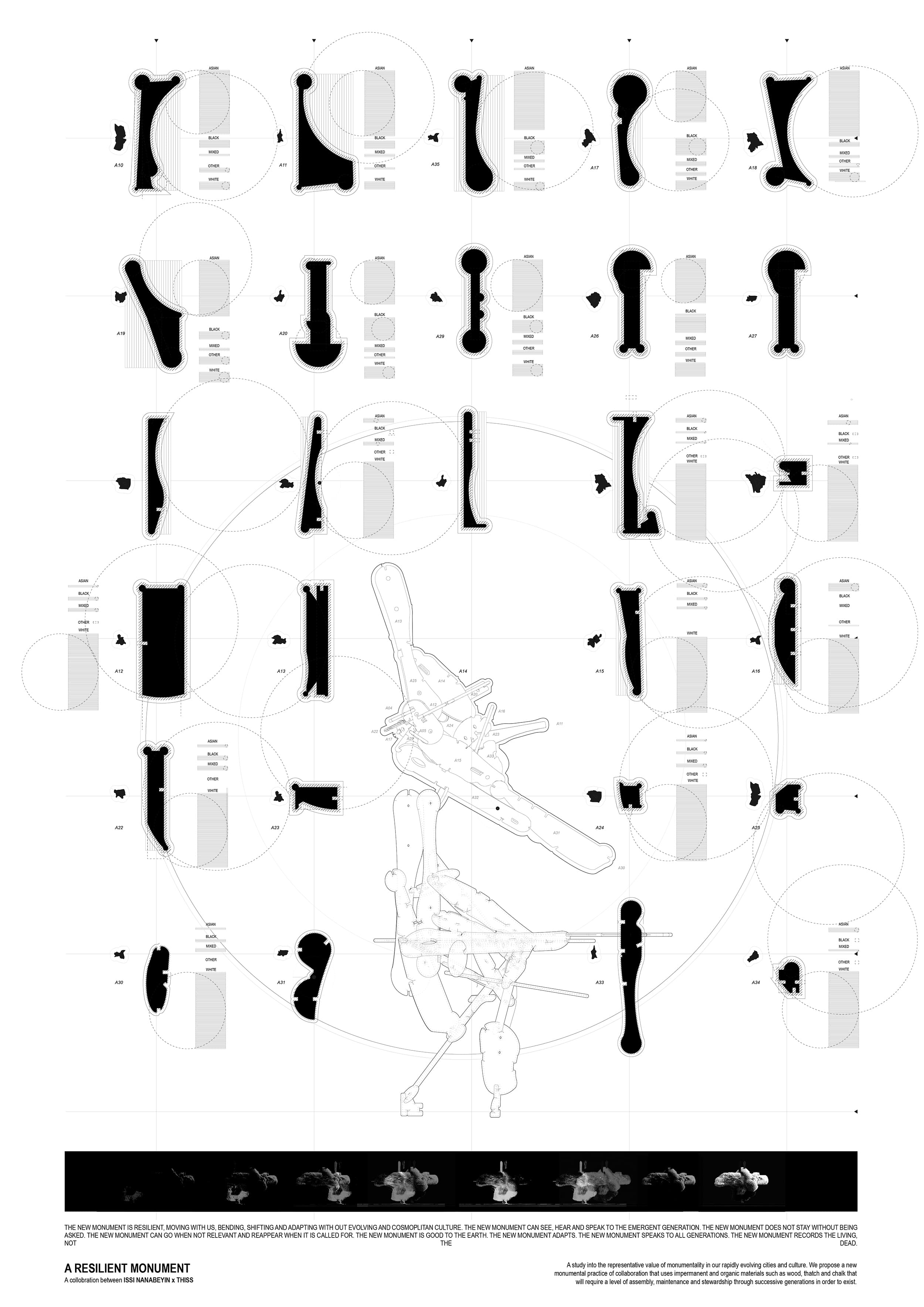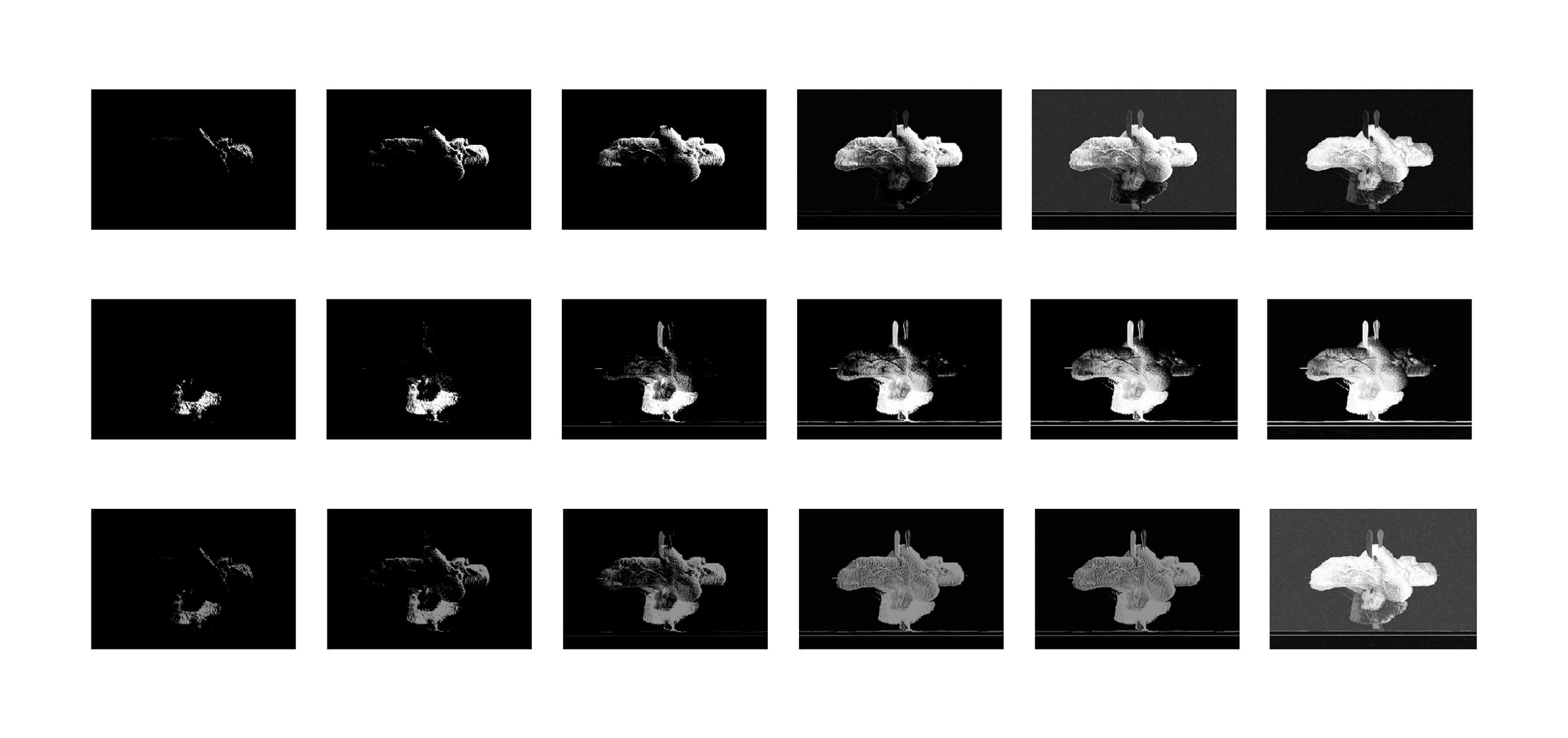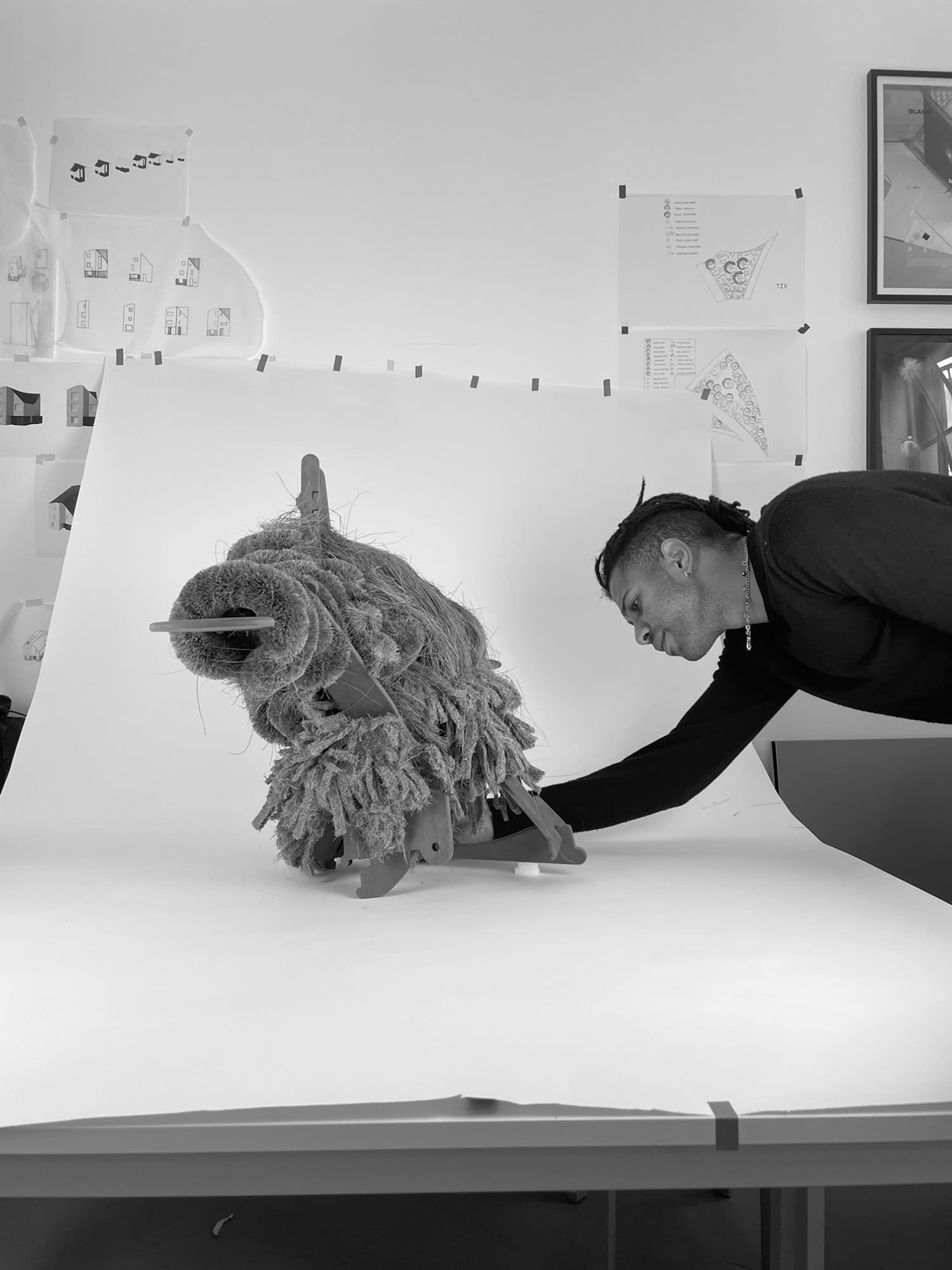A Resilient Monument
Year
2021Type
SculptureStatus
CompleteLocation
Seoul
A Resilient Monument is a collaboration between the practice and British Ghanaian artist Issi Nanabeyin. In 2021, the project was exhibited at the Seoul Biennale of Architecture and Urbanism and at The Royal Academy Summer Exhibition in London.
Through the fabrication of the 'Resilient Monument', we explored the ideas of materiality and representative decay - How can a material object move with us, bending, shifting and adapting with our evolving and complex culture? How might it engage with the emergent generation? How will it be borne from collective engagement? How will it disappear when not relevant and reappear when it is needed most? How might it be good to the earth? How will it record the living, not the dead?
Resilience has been previously understood as individual permanence and dominance, but modern times are showing us that a monument can be collectively pulled down, or thrown into a river, covered up or simply rejected. This project attempts to re-define resilience as impermanent, incremental, organic and optimistic. The traditional materiality of monuments is challenged by the use of impermanent and organic materials such as wood, thatch or chalk, with collaboration required for the monument’s existence; assembly, maintenance and stewardship through successive generations.
This re-defined monument must be cared for as a fragile act of kindness and affirmation of the values it is given by those who make it. Considered as a single version of a larger idea, it is a collaborative piece formed from our collective insights and interests.
The Djenne Mosque and the lse Shrine were key precedents for this project. The Djenne mosque is made from clay, it requires the community to come together each year to re-plaster the surfaces, add spaces, and repair cracks. The lse Shrine, made from cedar and thatch, is rebuilt every 20 years. This is a period sufficient for the thatched roofs to slump and rot; for moss to take control over the sharp lines of the cross beams. The approach of using materials with a lifespan less than humans leaves space for the act of positive re-affirmation in each generation.
Fragile bones are designed numerically to represent the communities of Birmingham, wrapped in a jacket of coconut fibre thatch; a fully organic and compostable protection from the elements.
A Resilient Monument


